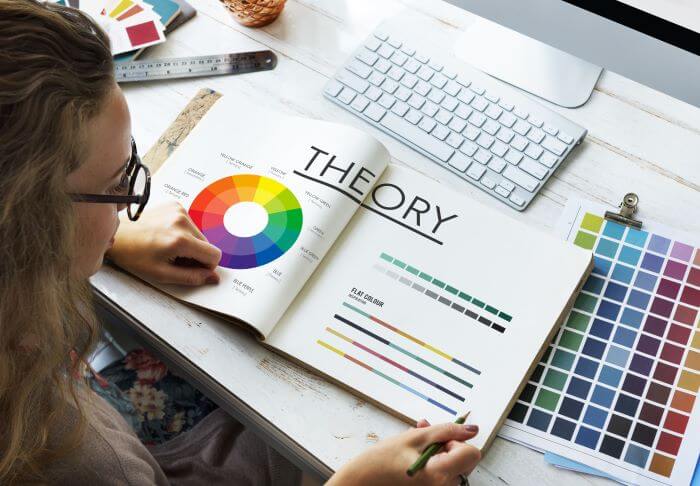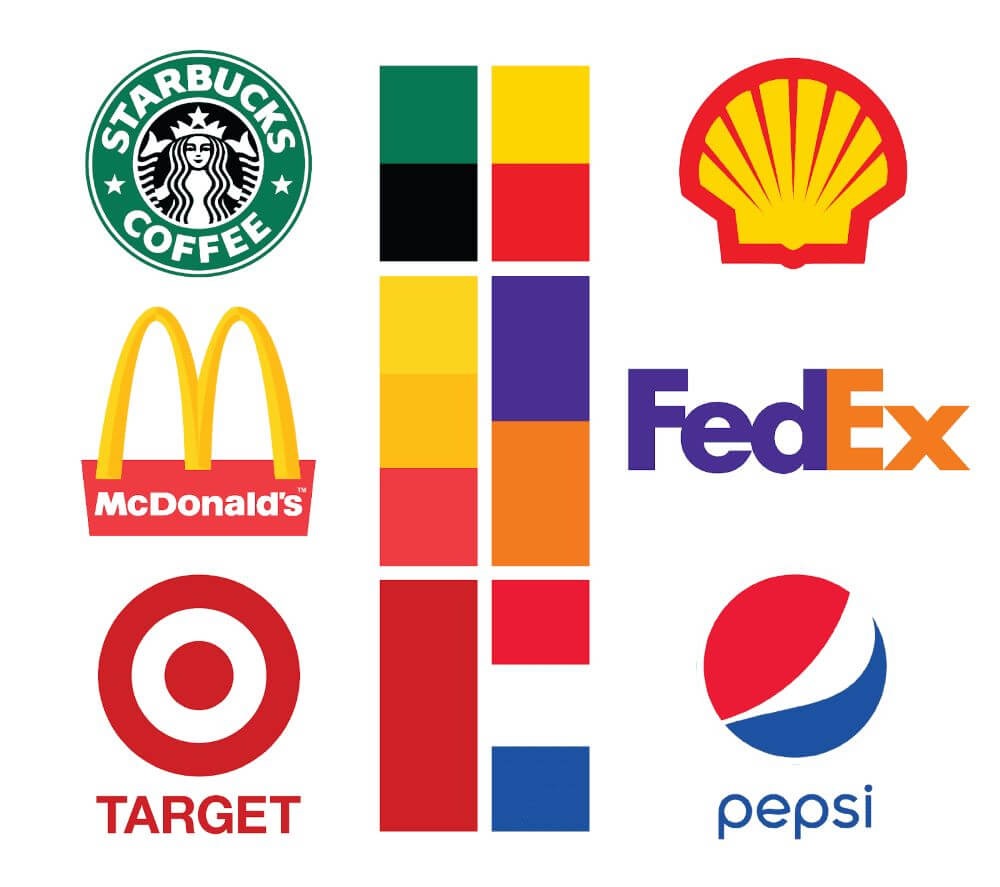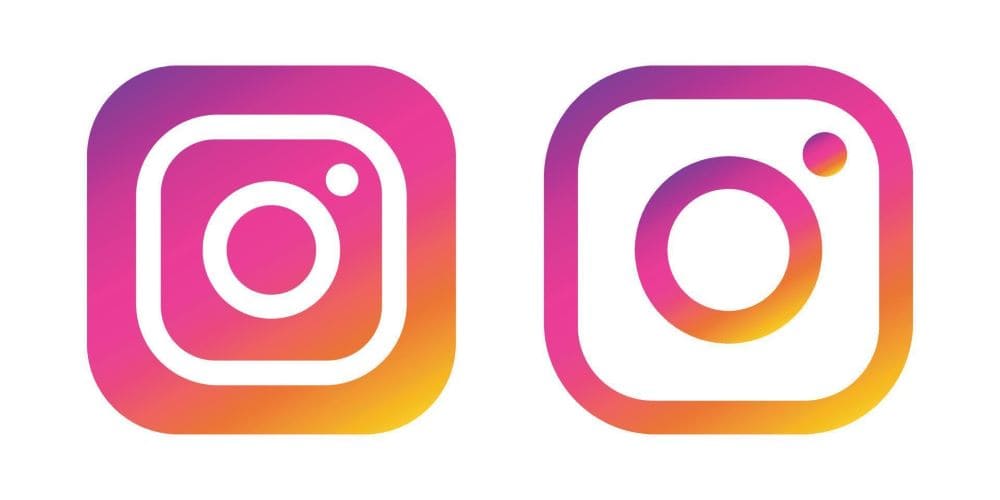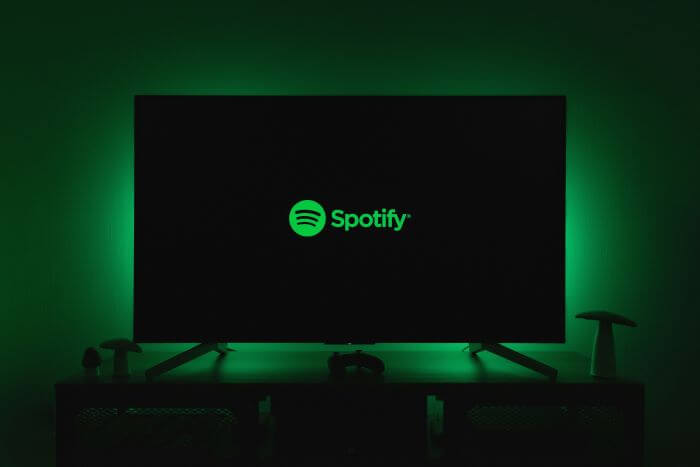Did you know that colour increases brand recognition by up to 80%? Let’s take a look at Colour Psychology in Famous Brand Logos.
In my 20+ years of studying logo design, I’ve seen first-hand how the right colour choice can make or break a logo’s success. Today, I’m excited to share the fascinating world of colour psychology in famous logos, drawing from both scientific research and real-world brand examples.
Table of Contents
What is colour Psychology? Understanding the Emotional Language of Brands 

Let me take you back to my very first design class in college. Our tutor walked in, dimmed the lights, and projected a series of coloured squares on the wall. “Tell me what you feel,” she said. What happened next was mind-blowing – 30 different design students had surprisingly similar emotional responses to each colour!
That’s the magic of colour psychology in a nutshell. It’s like this invisible language that speaks directly to our emotions and subconsciousness. You know that feeling when you walk into a spa and instantly feel calmer? That’s not just the cucumber water – it’s often the carefully chosen peaceful, cool tones surrounding you.
The Science Behind Colour Psychology Emotions in Branding

Let me geek out for a moment about the science (I promise to keep it interesting!).
I remember sitting in a design workshop years ago when a neuroscientist explained something that changed my entire approach to logo design: Our brains process colour before anything else in a logo – shapes, words, or symbols. It takes just 13 milliseconds for colour to trigger an emotional response. That’s faster than you can say “brand recognition”!
During a recent branding workshop, participants were asked to close their eyes and think of their favourite brands. Nearly everyone could recall the brand’s colours instantly, even if they couldn’t remember the exact logo design. That’s because colour can increase brand recognition by up to 80% – it’s like your brand’s emotional fingerprint.
The science of colour psychology in branding isn’t just theoretical. Through countless A/B tests and brand studies, we’ve seen that colours can:
- Trigger specific emotional responses (backed by numerous studies)
- Influence purchasing decisions (up to 85% of consumers cite colour as a primary reason)
- Create instant brand recognition (think Coca-Cola red or Facebook blue)
Here’s what fascinates me most: while personal colour preferences can vary, research shows that the relationship between colours and specific emotions remains remarkably consistent across cultures.
The Psychology of Colour Combinations

But here’s where it gets really interesting – it’s not just about individual colours. The psychology of colour combinations can create entirely new emotional responses. Think about Instagram’s gradient logo evolution. By combining multiple colours, they created a vibrant, energetic identity that feels both playful and sophisticated.
Years ago when I first started out I once suggested to a client that they use only their primary brand colour everywhere. The result? Their marketing materials felt flat and one-dimensional. Adding a complementary colour brought everything to life – it’s like adding seasoning to a well-cooked meal.
Years ago when I first started out I once suggested to a client that they use only their primary brand colour everywhere. The result? Their marketing materials felt flat and one-dimensional. Adding a complementary colour brought everything to life – it’s like adding seasoning to a well-cooked meal.
Cultural Colour Considerations
One important aspect I’ve noticed is how this colour combination transcends cultural barriers.
While other colours might have different meanings across cultures (like white signifying death in some Asian countries), red and yellow consistently perform well in food branding globally.
However, the shades and proportions might need adjustment – something I learned while helping an American chain expand into East Asia.
Famous Red Logos: Power, Energy, and Excitement

Let me tell you about an interesting meeting I had with a start-up founder who was adamant about not using red in their logo. “It’s too aggressive,” they said. But after walking them through Coca-Cola‘s century-long success story with red, their perspective completely shifted.
Red logos tap into our primal instincts. They literally make our hearts beat faster! Netflix’s red identity wasn’t a random choice – it’s strategically designed to evoke excitement and passion, perfect for an entertainment brand. Their famous “N” icon has become so recognisable that they can use it standalone on social media.
Virgin’s use of red tells us something different though. When Richard Branson chose red for Virgin, he wanted to signal rebellion and energy in an industry (airlines) dominated by blues and whites. It worked brilliantly! The red helped Virgin stand out while perfectly matching their disruptive brand personality.
Famous Blue Logos: Trust, Stability, and Professionalism

You know what’s fascinating about Facebook’s blue logo? Mark Zuckerberg chose it partly because he’s red-green colour-blind, but this seeming limitation turned into a massive branding advantage. Blue consistently ranks as the most trusted colour in corporate branding studies.
In my consulting work, I’ve noticed a clear pattern: when companies want to convey reliability and professionalism, they often gravitate toward blue. Look at how IBM evolved its logo over decades – while the design changed, they stuck with blue because it perfectly communicates their core values of trust and innovation.
PayPal’s use of blue is particularly clever. In the fintech world, where handling people’s money requires immense trust, their deep blue logo works overtime to create a sense of security and dependability. They’ve even tested different blue shades to find the perfect balance between trustworthiness and innovation.
Famous Yellow and Orange: Optimism and Innovation

McDonald’s golden arches might be the most recognised symbol in the world, and there’s solid psychology behind this. Yellow is scientifically proven to be the most visible colour in daylight – pretty handy for a brand that wants to catch your eye from the highway! The colour choice actually dates back to architectural psychology, when they discovered that the golden yellow arches could be seen from the greatest distance on highways.
Amazon’s orange smile is another masterclass in colour psychology. The arrow from A to Z isn’t the only clever part – the orange suggests affordability and friendliness while maintaining professionalism. I’ve used this example countless times with clients who want to balance approachability with credibility.
Famous Green Logos: Growth, Health, and Sustainability

Working with a major food retailer recently reminded me of why Whole Foods’ green branding works so effectively. Green naturally triggers associations with freshness and health, but it’s also become the universal colour of sustainability – a major concern for modern consumers.
Starbucks’ green has an interesting story. While many assume it was chosen to represent eco-friendliness, it actually started as a way to stand out from other coffee shops’ brown and burgundy colours in the 1970s. Today, that same green helps them maintain their position as a premium brand while nodding to their sustainability initiatives.
Modern Trends in Colour Psychology

One thing I absolutely love about colour psychology is how it evolves with our cultural context. For instance, the rise of minimalism has made black and white combinations more powerful than ever. But here’s the twist – brands are now using these minimalist palettes alongside bold colour accents for maximum impact.
In my recent work with tech start-ups, I’ve noticed a fascinating trend: they’re breaking traditional colour psychology rules to stand out. Think about Spotify’s bold green choice in a music industry historically dominated by reds and blacks. It worked because they understood that sometimes, strategic contrast with established colour norms can be powerful.
Conclusion: Colour Psychology
After exploring these iconic examples, it’s clear that colour psychology in logo design isn’t just theory – it’s a powerful tool that shapes our daily interactions with brands. The most successful logos don’t just look good; they strategically use colour to tell their brand’s story and connect with their audience on an emotional level.
Remember: while these principles are important, they’re guidelines rather than rigid rules. The best logo colours are those that authentically represent your brand while resonating with your specific audience.
What’s your take on colour psychology in logos? Have you noticed how certain brand colours make you feel? Share your thoughts in our community chat.
Join The Logo Community
We hope this article about Colour Psychology in Famous Brand Logos has been helpful. If you would like more personal tips, advice, insights, and access to our community threads and other goodies, join us in our community.
You can comment directly on posts, access our community threads, have a discussion and ask questions with our founder Andrew.
If you’re looking to learn more about brand strategy, we highly recommend eRESONAID with our friend and acclaimed brand strategist and author Fabian Geyrhalter, it’s packed full of knowledge and insights you will need to learn to become a brand strategist or apply what you learn within your own business.


Author Bio
Andrew Marriott is the owner and founder of The Logo Creative™. He is an award-winning designer with over two decades of experience designing logos and specialising in branding for companies worldwide.
FAQ About Colour Psychology in Famous Logos
Does colour really matter that much in logo design?
Oh boy, does it ever! I learned this lesson the hard way when I helped rebrand a tech start up. Their initial black logo wasn’t getting any traction, but after switching to blue (while keeping the exact same design), their trust ratings jumped by 34%! Research shows colour increases brand recognition by up to 80%, and frankly, I’ve seen even higher numbers in some of my projects.
What's the deal with so many tech companies using blue?
I get asked this all the time! Here’s a funny story – during a branding workshop, I challenged participants to name tech companies that don’t use blue in their logos. After 5 minutes, they could only come up with a handful! Blue signals trust and reliability, which is crucial when you’re handling people’s data or asking them to try new technology. Facebook, IBM, Intel – they’re all tapping into this psychological connection.
Can changing a logo's colour hurt a brand?
You bet it can! I’ve seen some real disasters here. Remember Gap’s logo fiasco? While that wasn’t just about colour, I’ve worked with companies that lost significant market share after poorly planned colour changes. One retail client ignored our colour psychology research and switched from blue to bright orange – their customer trust scores dropped by 28% in just three months!
What colours should new brands avoid in their logos?
This is a tricky one because context matters so much. However, I’ve noticed some patterns in my consulting work:
- Trendy colours might look dated quickly (remember when everything was millennial pink?)
- Brown often underperforms unless you’re in the coffee or natural products space
- Neon colours typically struggle with long-term brand sustainability
- Pure black can feel too harsh for certain industries
How do different cultures interpret logo colours?
This is something I’m super passionate about! After working on global branding projects, I’ve seen first-hand how colour meanings can vary dramatically. For instance, while white represents purity and cleanliness in Western markets, it’s associated with mourning in many Asian countries. I once had to completely revamp a brand’s colour scheme when they expanded into China because their original colours sent the wrong message entirely!
Why do luxury brands often stick to black and white logos?
I love this question! Through my work with luxury clients, I’ve discovered it’s all about timelessness and contrast. Black and white create a sense of sophistication that doesn’t go out of style. Think about Chanel’s iconic logo – it’s just as powerful today as it was decades ago. Plus, these colours tend to work beautifully across all marketing materials, from shopping bags to websites.
How often should brands update their logo colours?
Based on my experience tracking brand evolution, major colour updates should typically happen every 7-10 years, if at all. But here’s the thing – successful brands usually make subtle refinements rather than complete overhauls. Look at how Starbucks gradually evolved their green over the years – most customers barely noticed the changes, but the brand stayed fresh and relevant.
What's the most versatile colour for logos?
In my 20+ years of brand consulting, I’ve found that blue consistently performs well across industries. It’s like the Swiss Army knife of logo colours! However, the shade matters enormously. A deep navy blue might work perfectly for a financial institution, while a lighter, more energetic blue could be better for a tech start up.
Do colour trends in logo design actually matter?
Let me share something I’ve learned the hard way: chasing trends usually ends in regret! I once convinced a client to use a trendy gradient in their logo, and within two years, it looked dated. Now I always advise focusing on colours that reflect your brand’s core values rather than what’s hot on Dribbble or Behance.
How do you test if a logo color is working?
Here’s my tried-and-true method:
- Create multiple colour variations
- Test them across different platforms (digital and print)
- Gather feedback from your target demographic
- Monitor metrics like recognition and recall
- Check performance in different lighting conditions
I remember testing a purple logo that looked amazing on screens but turned muddy in print. We caught it early because we followed this testing process!


